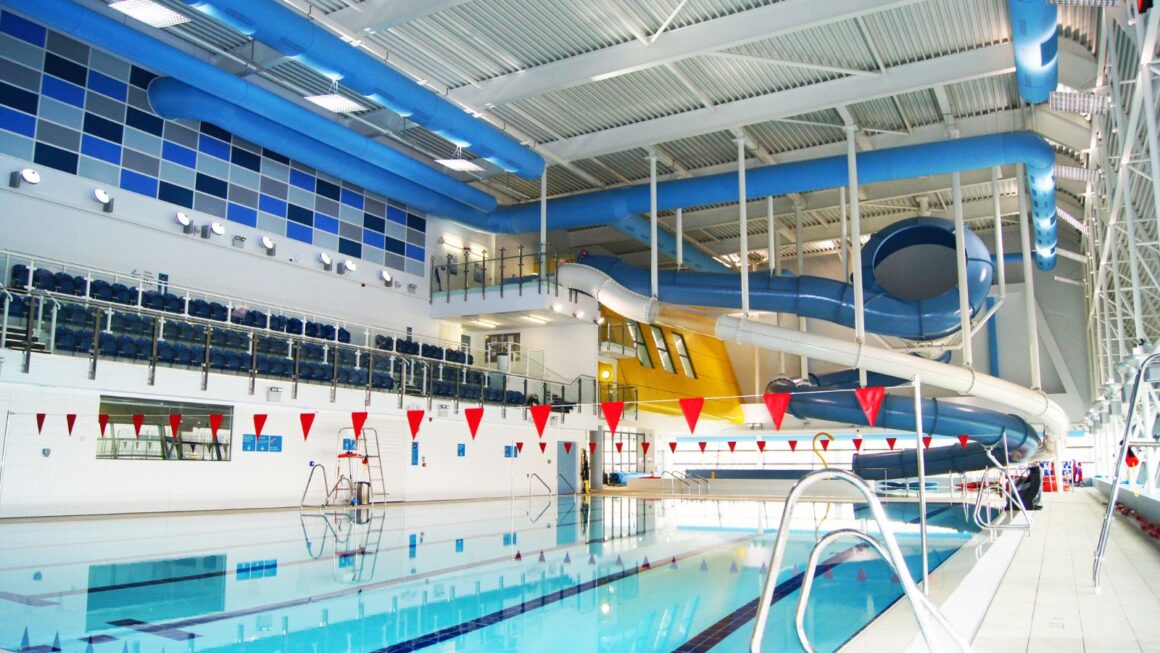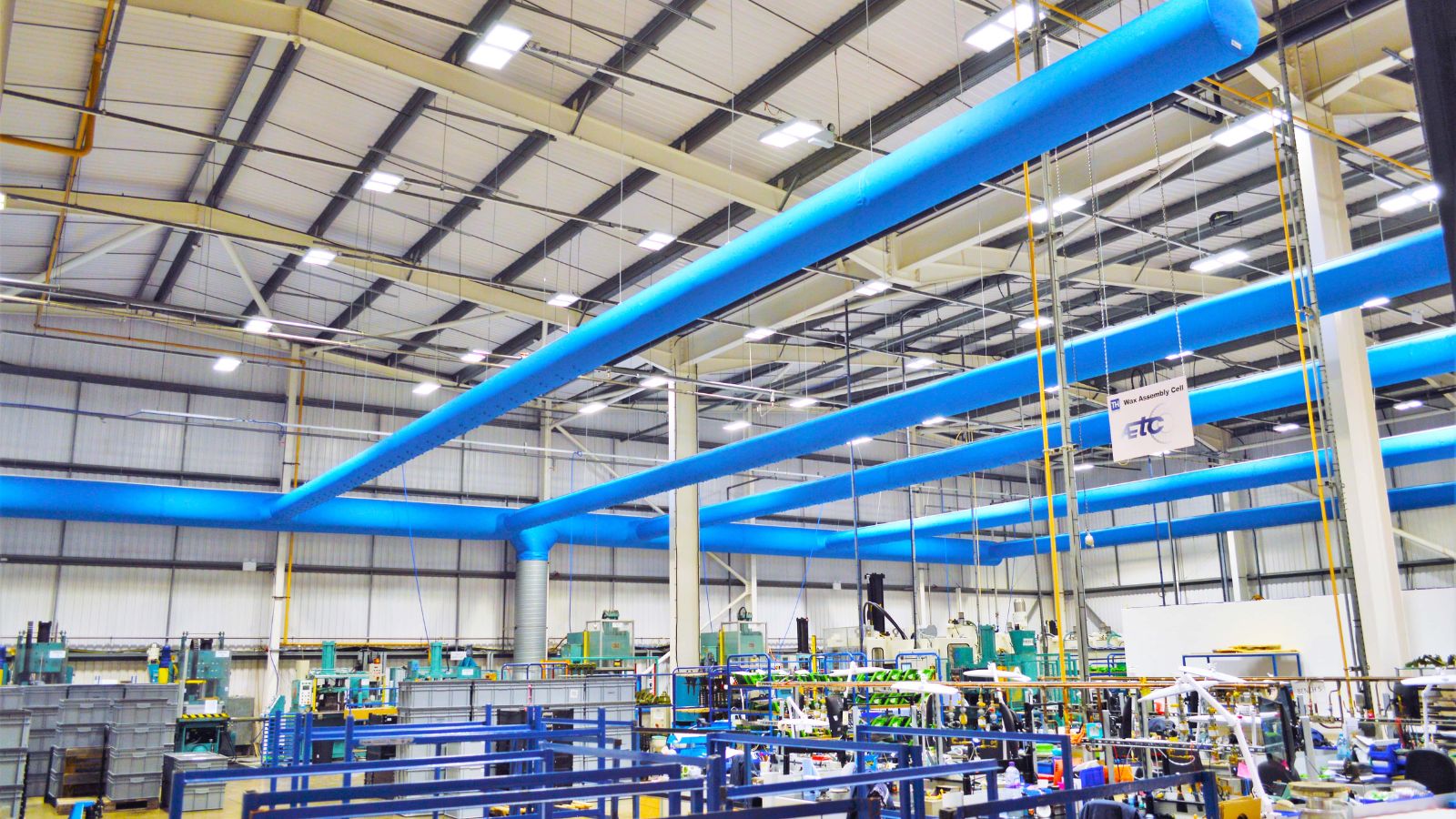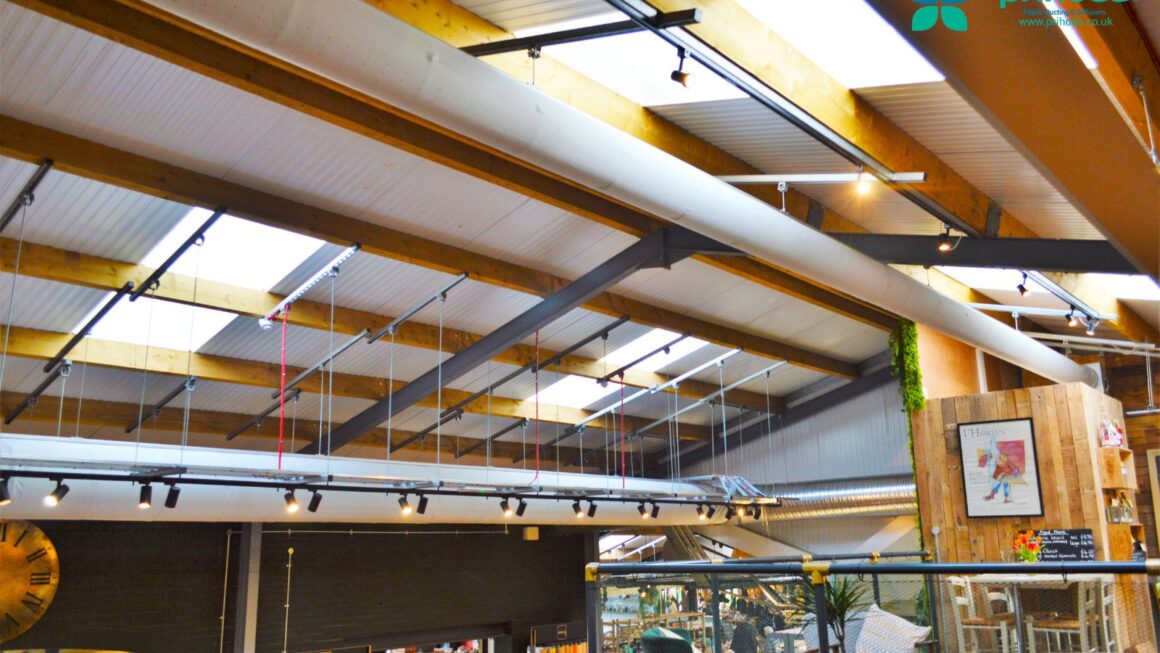Sustainability in building design has become a key focus across commercial, industrial, and educational sectors alike. Architects and engineers are starting to prioritise eco-friendly materials and energy-efficient systems to reduce environmental impact and improve building performance. However, ventilation is a key aspect of sustainable design that’s often overlooked.
Proper ventilation not only ensures healthy indoor air quality, but also works to regulate temperature and reduce energy consumption. By integrating natural ventilation strategies and advanced air filtration systems, buildings can become healthier,more efficient, and better equipped to meet future environmental standards.
Fabric ducting systems offer a ventilation solution with several environmental benefits, including lower energy consumption, improved indoor air quality, and even the use of recycled materials in fabric duct production.

But how do these innovative ventilation systems contribute towards sustainable building design?
Energy Efficiency and Optimised Air Distribution
Heating, ventilation, and air conditioning (HVAC) systems are responsible for a significant portion of a building’s energy consumption. When compared to fabric ducting, traditional metal ductwork can be less efficient in distributing air evenly, leading to hotspots and cold zones that require additional energy to regulate.
Fabric ducting provides a more efficient alternative. Its permeable design allows for even air distribution, ensuring consistent temperatures throughout the space. By eliminating draughts and reducing the need for high-powered fans to correct airflow imbalances, fabric ducting can lower the overall energy consumption of the HVAC system.
Moreover, fabric ducts are much lighter than metal ductwork, which simplifies installation and reduces structural load requirements. This can lead to cost savings in building materials and construction while contributing to a smaller carbon footprint.
Improved Indoor Air Quality
Indoor air quality is a crucial factor in creating healthy spaces for occupants. Poor air circulation can lead to a build-up of pollutants, allergens, and moisture, which can negatively impact not only comfort and health but also productivity in working, educational, and industrial spaces. Over time, these issues may contribute to persistent health problems, and issues like sick building syndrome.
How Fabric Ducting Enhances Indoor Air Quality
Even Air Distribution: Fabric ducting ensures consistent airflow throughout the space, eliminating stagnant areas that can lead to discomfort. By promoting proper ventilation, it helps reduce the risk of mould and mildew formation, keeping your environment fresher and healthier.

Antimicrobial Coatings: Many fabric ducts come with antimicrobial treatments that minimise the growth of bacteria and fungi, helping to maintain cleaner air and improve overall hygiene. These coatings provide an added layer of protection, making the ducts more resistant to microbial build-up over time.
Easy Maintenance: Fabric ducts can be easily removed, washed, and reinstalled, ensuring that dust and other contaminants don’t accumulate within the system, keeping the air clean and fresh. Regular cleaning not only improves air quality, but also extends the lifespan of the ducts, making them a practical and cost-effective choice.
In spaces such as schools and healthcare facilities, maintaining high indoor air quality is critical for occupant well-being and productivity.
Sustainability through Recycled Materials
One of the most exciting developments in fabric ducting is the use of recycled materials. Fabric ducts made from recycled plastic bottles (PET) work to not only reduce waste, but also support a circular economy by repurposing materials that would otherwise end up in landfills or oceans.
The Key Benefits of Recycled Fabric Ducts
Lower Environmental Impact: Reducing the demand for virgin materials helps to conserve natural resources, cut down on energy-intensive production processes, and minimise waste. By prioritising recycled or repurposed materials, we can protect ecosystems and reduce our overall carbon footprint.
Improved Building Certification: Incorporating recycled materials into building design can contribute towards achieving sustainability certifications such as BREEAM and LEED, helping projects stand out as eco-friendly and forward-thinking. These certifications not only boost a building’s environmental credentials, but also enhance its marketability and long-term value.
Durability and Performance: Despite being made from recycled materials, these fabric ducting systems meet the same high standards for durability and air distribution as their non-recycled counterparts, ensuring reliable performance over time. They are built to withstand daily use in demanding environments without compromising on quality or efficiency.
By choosing fabric ducts made from recycled materials, businesses can reduce their carbon footprint while aligning with growing expectations for greener construction practices.
Supporting Long-Term Sustainability Goals
Incorporating fabric ducting into building projects is not just a short-term solution; it supports long-term sustainability goals by enhancing energy efficiency, reducing waste, and promoting healthier indoor environments. Compared to traditional systems, fabric ducts offer greater flexibility in design, allowing them to adapt to evolving building requirements and technological advancements.
Additionally, fabric ducting systems work to provide a lightweight ventilation option, making them easy to dismantle and recycle at the end of their life cycle. This helps to further reduce waste and support a more sustainable lifecycle approach.
Overall, fabric ducting plays a vital role in sustainable building design by improving air distribution, reducing energy consumption, and enhancing indoor air quality. With innovations like fabric ducts made from recycled materials, sustainable solutions demonstrate how environmentally conscious design can be both practical and impactful.
For architects, engineers, and building managers looking to reduce the environmental impact of their projects, fabric ducting presents a smart, sustainable choice that aligns with modern building standards and green initiatives.

